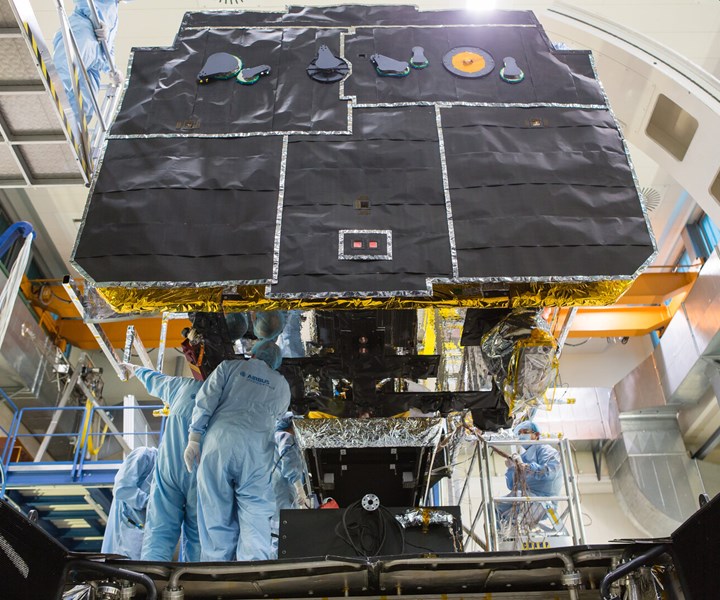Solar Orbiter embarks on its mission to study the Sun
Solar Orbiter’s carbon fiber composite, titanium layered solar shield guides heat away from the spacecraft and can withstand up to 970º F (521º C).

A carbon fiber composite, titanium layered solar shield protects the Solar Orbiter from the heat of the Sun. Source | ESA
Solar Orbiter, a collaborative mission between European Space Agency (ESA, Paris, France) and NASA (Washington, D.C., U.S.) to study the Sun, launched at 11:03 p.m. EST February 9 on a United Launch Alliance (ULA, Centennial, Colo., U.S.) Atlas V rocket from Launch Complex 41 at Cape Canaveral Air Force Station in Florida.
Solar Orbiter is on a unique trajectory that will allow its comprehensive set of instruments to provide humanity with the first-ever images of the Sun's poles. This trajectory includes 22 close approaches to the Sun, bringing the spacecraft within the orbit of Mercury to study the Sun and its influence on space.
Solar Orbiter comprises a 2.5 x 3.0 x 2.5-meter box-shaped bus with two solar panel wings spanning 18 meters. A 4.4-meter instrument boom and three 6.5-meter antennas protrude from the spacecraft body.
A carbon fiber composite, titanium layered solar shield covers one side of the spacecraft. The shield has apertures for various instruments. The 324-pound heat shield reflects and guides heat away from the spacecraft and can withstand up to 970º F (521º C). The heat shield measures 3.1 meters by 2.4 meters. The front layer — a 0.05 millimeter thick layer of titanium foil — reflects heat. At the base of the heat shield is a 2.94-meter by 2.56-meter support panel that is about 5 centimeters thick. It is made of lightweight aluminium honeycomb with two high thermal conductivity carbon fiber skins and insulated by multi-layer insulation layers capable of withstanding 572º F (300 °C). Solar Orbiter’s heat shield is coated with a thin, black layer of calcium phosphate, a charcoal-like powder much like pigments used in ancient cave paintings.
It will take Solar Orbiter about two years to reach its primary science orbit where it will combine two main modes of study. In-situ instruments will measure the environment around the spacecraft, detecting such things as electric and magnetic fields and passing particles and waves. The remote-sensing instruments will image the Sun from afar, along with its atmosphere and its outflow of material, collecting data that will help scientists understand the Sun's inner workings.
Throughout its mission, Solar Orbiter will use successive Venus gravity assists to draw its orbit closer to the Sun and lift it out of the ecliptic plane, allowing for unprecedented views of the Sun's north and south poles.
Related Content
-
TU Munich develops cuboidal conformable tanks using carbon fiber composites for increased hydrogen storage
Flat tank enabling standard platform for BEV and FCEV uses thermoplastic and thermoset composites, overwrapped skeleton design in pursuit of 25% more H2 storage.
-
McLaren celebrates 10 years of the McLaren P1 hybrid hypercar
Lightweight carbon fiber construction, Formula 1-inspired aerodynamics and high-performance hybrid powertrain technologies hallmark this hybrid vehicle, serve as a springboard for new race cars.
-
The lessons behind OceanGate
Carbon fiber composites faced much criticism in the wake of the OceanGate submersible accident. CW’s publisher Jeff Sloan explains that it’s not that simple.
















